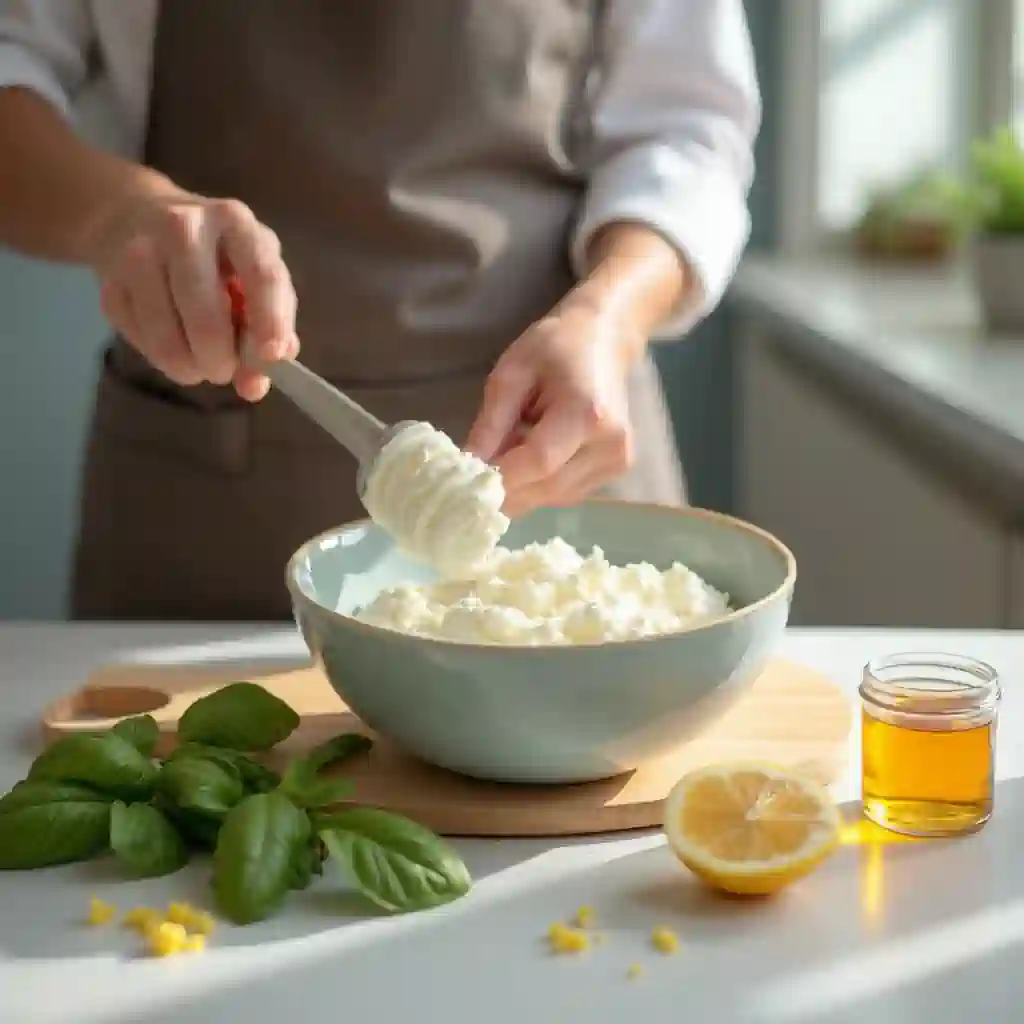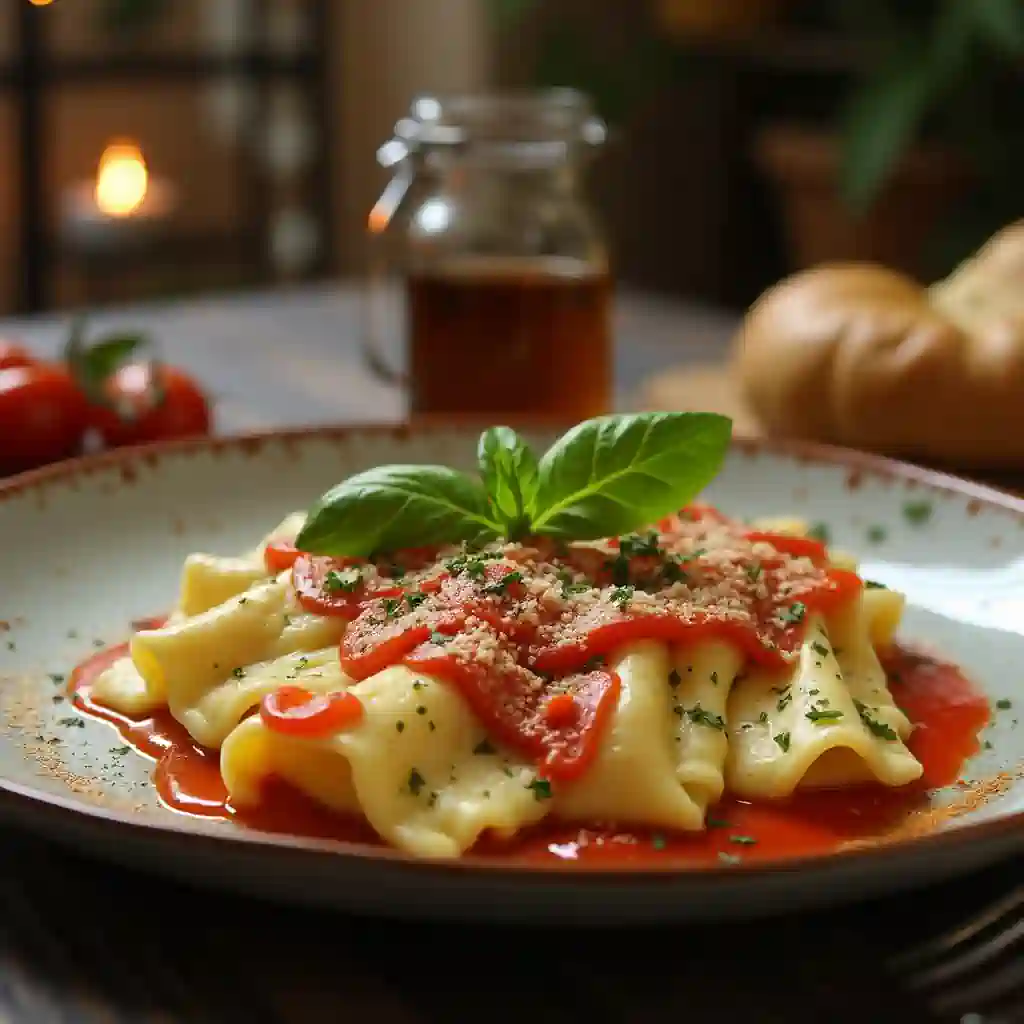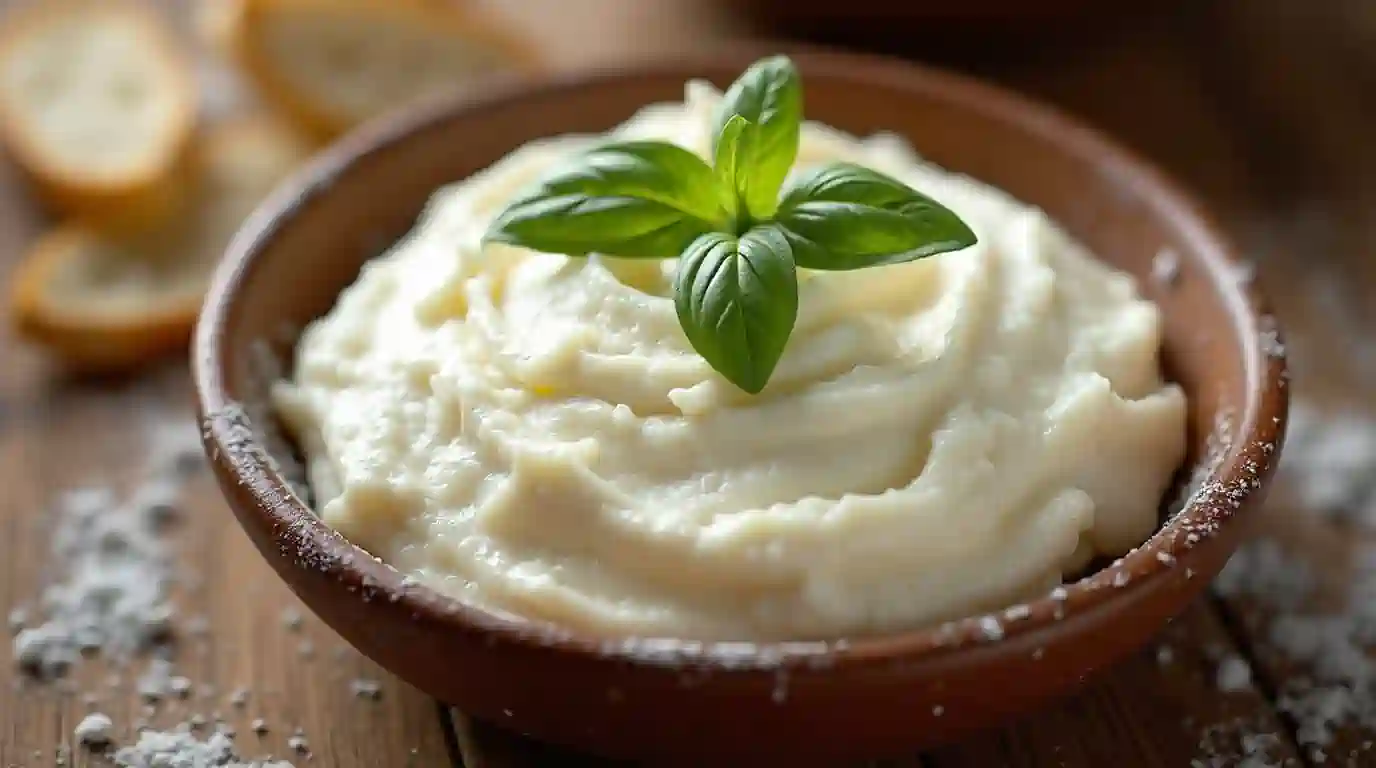Welcome, food lovers! In this article, we’ll explore ricotta—that delightful, fresh Italian cheese that has won hearts worldwide. From its creamy, mild flavor to its versatile uses in both classic Italian dishes and modern culinary creations, this Cottage Cheese stands out as a culinary treasure. We’ll dive into what makes ricotta so unique, examine its rich history, and discuss its cultural significance in Italian cuisine. Moreover, you’ll discover practical tips and inspiring ideas that show why this fresh, homemade cheese remains a favorite among chefs and home cooks alike. Let’s jump in and uncover the magic behind this versatile dairy delight!
Table of Contents
Introduction to Ricotta
What Is Ricotta?
Ricotta is a fresh, creamy cheese made from whey—the liquid leftover from making other cheeses. Unlike many aged cheeses, this Cream Cheese is light, delicate, and mild. Its smooth texture makes it perfect for both savory dishes like pasta and sweet treats such as cheesecake. Many chefs and home cooks love using ricotta because it enriches dishes without overpowering other flavors. This versatile cheese can be blended into sauces, dolloped over pizzas, or used as a spread, making it an indispensable ingredient in the kitchen.
The History and Cultural Importance of Ricotta
Originating in Italy, ricotta has been a cornerstone of traditional Italian cuisine for centuries. Initially crafted from the whey left over from cheese-making, it was embraced for its fresh taste and delicate texture. Over time, ricotta evolved into a gourmet ingredient, celebrated in family recipes and festive meals alike. Today, it holds a special place in Italian cooking, symbolizing both tradition and innovation.
“From humble beginnings to a culinary icon, ricotta embodies Italy’s rich food heritage.”
Essential Characteristics and Nutritional Benefits
Nutritional Profile
This cheese is prized for its excellent nutritional value. It is rich in protein, which supports muscle repair, and a great source of calcium that strengthens bones. Additionally, it provides important vitamins, such as B12, essential for energy production. Its low-fat nature makes it a smart choice for a balanced diet.
Next, it delivers a light, fluffy texture along with its nutritional benefits. A single serving supplies vital minerals and vitamins that contribute to a healthy diet. Its versatility in both savory and sweet dishes makes it a perfect ingredient for many recipes. This quality makes it a popular choice among those who value both taste and health.
Unique Taste and Texture
What sets this cheese apart is its light, almost airy consistency combined with a subtly sweet flavor. Its smooth nature allows it to blend effortlessly into sauces, fillings, and desserts. Unlike denser cheeses, it has a luxurious mouthfeel without overpowering other flavors. This delicate quality is why it is ideal for recipes ranging from stuffed pasta to decadent desserts.
In summary, understanding its nutritional benefits and unique texture helps explain why this ingredient is a favorite in kitchens worldwide. For more delicious recipes featuring this versatile dairy treat, check out our recipe article on the website.
Culinary Uses and Recipes Featuring Ricotta
Traditional Italian Recipes with Ricotta

Classic Italian cuisine relies on this cheese for its creaminess. In lasagna, it adds a rich layer between pasta and meat. In stuffed shells and ravioli, it serves as a delicate filling paired with herbs and spices. Traditional desserts like cannoli and cheesecake also celebrate its smooth, rich texture. These dishes illustrate how this ingredient enhances flavor and texture, making every bite memorable.
Furthermore, many Italian recipes blend it with spinach, garlic, and a pinch of nutmeg to create savory pasta fillings. In these dishes, its mild flavor allows other ingredients to shine. When used in baked recipes, it provides moisture and softness that elevate the overall texture. Classic Italian dishes thus showcase the versatility of this dairy delight, making it indispensable in many kitchens.
Modern and Creative Ways to Use Ricotta

Beyond tradition, innovative cooks are finding fresh uses for this ingredient. For instance, try it as a spread on toast or bagels, enhanced with a sprinkle of herbs and a drizzle of honey. It also works well in smoothies, lending creaminess and protein. Moreover, modern recipes incorporate it into salads with fresh greens, fruits, and nuts for a light, refreshing dish.
Many chefs now use it as a base for gourmet desserts. For example, blend it with citrus zest for a tangy pastry filling or layer it with berries and vanilla to create an elegant parfait. Savory dips and spreads also benefit from its smooth consistency, perfect for serving with crackers or fresh vegetables.
“A touch of this creamy delight can turn an ordinary dish into a gourmet treat.”
For more innovative ideas and detailed recipes, check out our recipe article Turkey Meatloaf Recipe: The Ultimate Healthy Comfort Food
Variations, Tips, and Expert Advice
Tips for Cooking and Storing Ricotta
When handling this dairy treat, gentle care is key. Always store it in the fridge and use it within a few days to keep it fresh. When mixing it into recipes, fold it in slowly to maintain its airy texture. Avoid overmixing, which can make it dense. These simple tips help preserve its smooth consistency and delicate flavor.
“Proper care ensures that your ingredient stays fresh, smooth, and ready to elevate any dish.”
Substitutions and Creative Twists
If you want to experiment, consider creative substitutions and twists. For example, you might replace it with cottage cheese or mascarpone in certain recipes, though each substitute offers a slightly different texture. Additionally, try adding lemon zest or fresh basil for an extra burst of flavor. These variations let you tailor traditional dishes while keeping the essence of the original ingredient intact.
“A creative twist can transform a classic dish into a culinary masterpiece.”
For more delicious recipes, check out our recipe article BBQ Meatloaf Recipe
FAQs About Ricotta
Is ricotta cheese healthy to eat?
Yes, this Farmer’s Cheese is a healthy choice. It’s high in protein for muscle repair and rich in calcium for strong bones and teeth. Packed with essential vitamins like B12, it supports energy and overall health. Its low fat makes it great for a balanced diet, while its creamy texture works well in both savory and sweet dishes. Light and nutritious, ricotta is a favorite among health-conscious cooks, adding delicious creaminess to any meal
Is ricotta just cottage cheese?
No, ricotta is not the same as cottage cheese. Although both are fresh and soft, they differ in production and texture. Ricotta is made from whey—the liquid left over from making other cheeses—resulting in a smooth, creamy consistency with a slightly sweet flavor. In contrast, cottage cheese is curdled milk, which gives it a lumpier texture and a tangier taste. These differences mean that ricotta blends seamlessly into recipes, whether in pasta fillings or desserts, while cottage cheese retains more distinct curds. Ultimately, each cheese has its unique qualities, and while they may sometimes be used interchangeably, the choice depends on the desired texture and flavor in your dish.
What is ricotta cheese mainly used for?
This fresh cheese is a highly versatile ingredient used in both savory and sweet dishes. It is a staple in Italian cuisine, where it is famously used in dishes like lasagna, ravioli, and stuffed shells, adding a rich, creamy layer that complements robust flavors. In desserts, ricotta serves as a key component in classics such as cannoli and cheesecake, where its smooth texture and subtle sweetness shine. Beyond traditional recipes, ricotta is also enjoyed as a spread on toast, mixed into smoothies for extra creaminess, or even blended with fruits for a refreshing snack. Its ability to seamlessly enhance the taste and texture of various dishes makes it a beloved ingredient in kitchens around the world.
Can I eat ricotta cheese raw?
Absolutely, you can eat ricotta raw, and many do so to enjoy its fresh, delicate flavor and smooth texture. This fresh cheese is often used in its raw form in salads, on bagels, or as a spread, preserving its nutritional benefits like high protein and calcium content. Eating ricotta raw allows you to fully appreciate its mild taste, which works beautifully in both sweet and savory dishes. Additionally, incorporating raw ricotta into your meals is a great way to add creaminess without the need for cooking, thereby retaining all of its natural vitamins and minerals. Whether served on its own or mixed with fruits and honey, raw ricotta is both safe and delicious.
“Every bite of fresh ricotta reveals another reason to savor its culinary magic.”
Conclusion and Final Thoughts
Recap of Its Versatility and Benefits
In summary, this guide has explored the many benefits of this creamy Italian cheese. We examined its rich nutritional profile and unique, light texture that make it ideal for both classic and modern dishes. Its ability to blend seamlessly into recipes enhances flavors and adds a touch of luxury to any meal. This ingredient not only nourishes but also enriches culinary experiences by combining tradition with modern creativity.
Final Tips and Encouragement for Home Cooks
As you continue your culinary journey, experiment with this dairy delight in your favorite recipes. Handle it gently, and always aim for freshness to maintain its signature texture. Don’t be afraid to try new combinations and creative twists. Every attempt is a step toward culinary mastery, and your experiments will lead to delicious discoveries. Share your successes and enjoy the process—each dish is an opportunity to innovate and impress.
“Embrace the magic of this ingredient and let your culinary creativity soar.”
Happy cooking, and enjoy every creamy, delicious bite of this Italian treasure!
For more creative baking ideas, check out our guide on
- Receta Crumbl Cookies
- Meatloaf Sauce Recipe
- Banana Bread Recipe with Cake Mix
- The Ultimate Velveeta Mac and Cheese Recipe – Creamy & Delicious
- Star Anise: A Comprehensive Guide to Its Uses, Benefits, and Culinary Magic
- How To Make Simple Banana Bread: Tips And Tricks
- What Makes Gruyère Cheese Special? A Complete Guide
- Cinnamon Rolls: The Ultimate Guide to Perfect Homemade Treats

